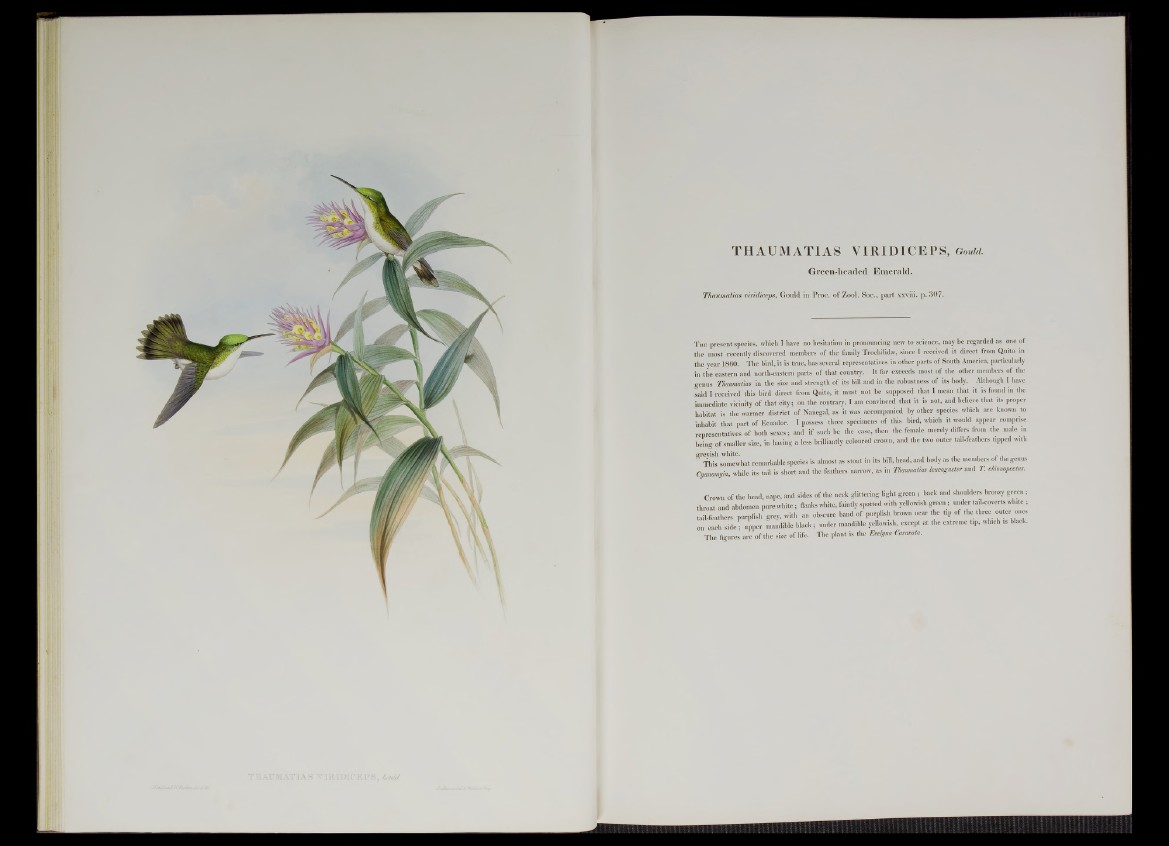
THAUMATIAS VIRIDICEPS, Gould.
Green-headed Emerald.
Thaumatias viridiceps, Goulil in Proe. of Zool. Soe., part xxviii. p. 307.
T he present species, which I have no hesitation in pronouncing new to science, may be regarded as one of
the most recently discovered members of the family Trochilidie, since I received it direct from Quito in
the year 1860. The bird, it is true, has several representatives in other parts of South America, particularly
in the eastern and north-eastern parts of that country. It far exceeds most of the other members of the
genus Thaumatias in the size and strength of its bill and in the robustness of its body. Although I have
said I received this bird direct from Quito, it must not be supposed that I mean that it is found in the
immediate vicinity of that city; on the contrary, I am convinced that it is not, and believe that its proper
habitat is the warmer district of Nanegal, as it was accompanied by other species which are known to
inhabit that part of Ecuador. I possess three specimens of this bird, which it would appear comprise
representatives of both sexes; and if such be the case, then the female merely differs from the male in
being of smaller size, in having a less brilliantly coloured crown, and the two outer tail-feathers tipped with
greyish white. , . ,
This somewhat remarkable species is almost as stout in its bill, head, and body as the members of the genus
Cyatumyia, while its tail is short and the feathers narrow, as in Thaumatias leucogaster and 71 chaaopectus.
Crown of the head, nape, and sides of the neck glittering light green ; back and shoulders bronzy green;
throat and abdomen pure white; flanks white, faintly spotted with yellowish green; under tail-coverts white ;
tail-feathers purplish grey, with an obscure band of purplish brown near the tip of the three outer ones
on each side upper mandible black; under mandible yellowish, except at the extreme tip, which is black.
The figures are of the size of life. The plant is the Eeelyaa Caravata.